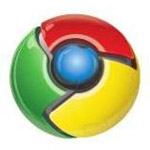Category: Search Engines
All posts about Search Engines
-
Google for dummies
If at the next cocktail party you attend someone walks up to you and asks for the seven millionth time how you can work with Google without working for Google, these are the videos you have to show them (and shut them up forever):
As a company, Google focuses on three key areas: Search, Ads and Apps. Search is our core technology; ads are our central business proposition; and apps are the umbrella over our web-based software that you can access anywhere, any time. While each of these has a lot of technology under the hood, the basic tenets for Search, Ads and Apps are very simple. We’ve created some short videos explaining the principles behind our core services.
How Google Search works by Matt Cutts:
How Google Search Ads work by Nundu Janakiram:
How Google Apps work by Vivian Leung:
via How Google Works
-
Microsoft Pivot: a new way to browse and arrange massive amounts of data online
In its endless quest to categorize all information available (just like Google), Microsoft Live Labs has come up with Pivot:
Here at Live Labs we’re all about experiments, and Pivot is our most ambitious to date. Pivot makes it easier to interact with massive amounts of data in ways that are powerful, informative, and fun. We tried to step back and design an interaction model that accommodates the complexity and scale of information rather than the traditional structure of the Web.
Sounds ambitious indeed, but looks cool and handy too I have to admit. Gary Flake, founder and director of Live Labs, did a TED presentation on the Pivot features (spectacular zooms in and out of web databases, discovery of patterns and links, …) that you absolutely, definitely have to see:
Will this become the new search, will this kind of applications revolutionize the way we think about search? Or will it change the way we browse the web?
-
Google’s robots.txt Halloween treat
OK, it’s a geeky joke but I like it. Google changed its robots.txt file for Halloween. Somewhere near the end it says:
User-agent: Kids
Disallow: /tricks
Allow: /treats -
The Google Story
The Google history in just over 2 minutes by Google UK:
A (very) quick look back at the Google story over the last 11 years. From Stanford to Mountain View and around the world, featuring many different products, starting with BackRub (Search) up to Google Wave, StreetView and Chrome.
-
Google Chrome Japanese Commercial
Google Japan launched a short and nice commercial to stimulate the use of the Google Chrome browser:
Also check out the making of picture series.
-
Google favicons, a history…
Since almost two weeks, Google uses a new favicon. It’s the second time in less than one year Google changes its favorites icon:

This classic favicon was used for almost 8 years.

In May 2008, the favicon was changed for the first time ever. The protest was immense and in June 2008, Google started to encourage users to submit their own favicon suggestions.

In January 2009, a final new favicon was deducted from all user suggestions. Once again, the reactions are not exactly enthusiastic. But I’m sure we’ll get used to it…
Since the last update, the GMail favicon has unfortunately disappeared completely , but the Google Analytics favicon still stands… for now.


-
The battle of the search engines
One way to decide the battle of the big three search engines (Google, Yahoo!, Live Search) is this one:
Google vs. Yahoo!:
Google vs. Live Search:
Yahoo! vs. Live Search:
You can vote on Search Engine Rap Battle.
-
The Google Chrome browser countdown has begun
 In a few hours, Google will launch the first version of Google Chrome, an open source browser, powered by Google. The rumors have been around for a long time and there were even moments when Google denied they were working on a Google browser. But today, a little earlier than expected, a mail containing a comic book about Google Chrome was sent to a few Google minded bloggers. As a result, Google made an official statement confirming the imminent launch of Google Chrome.
In a few hours, Google will launch the first version of Google Chrome, an open source browser, powered by Google. The rumors have been around for a long time and there were even moments when Google denied they were working on a Google browser. But today, a little earlier than expected, a mail containing a comic book about Google Chrome was sent to a few Google minded bloggers. As a result, Google made an official statement confirming the imminent launch of Google Chrome.Apparently, Google took the best elements of all browsers available and mixed them into what they hope to be the ultimate browsers. I can’t wait to give it a try. And there’s more, all code will be made open source. I know which page I’m going to check first thing tomorrow morning…
Another small step for Google towards total internet domination ;-)
-
“Here’s Google!!!” – The Googling
The Googling is a series of terrifying YouTube videos by The Vacationeers, warning us about the dangers of Google. It’s funny, but in a way, it really makes you think as well. But judge yourself:
The Googling Part I: Google Maps
The Googling Part II: Google Moon
